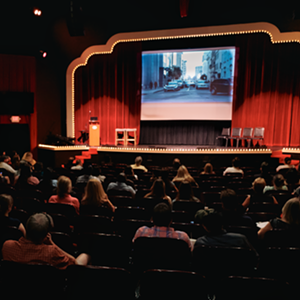Next month in Buenos Aires the second of three international "Future of Places" conferences will draw city officials, planners and academics from around the globe to study methods for creating and sustaining vibrant parks and streets. Civic leaders attend conferences like this seeking guidance as they try to revitalize underused public spaces.
In Savannah we have many streets and public places that need no such resuscitative efforts. But not everyone knows a good thing when they see it.
For instance, increased bicycle use was described as a “mess” in a recent letter to the editor of the Savannah Morning News. Yet it is a goal to which countless communities aspire. Cities across the country are spending millions to harness the public safety, public health and economic power of bicycling. Some are sending delegates to Savannah to learn from our successes.
Similarly, many communities would love to contend with growing numbers of people walking and riding bikes in parks. That’s why developing sensible strategies that improve safety for pedestrians and cyclists in Forsyth Park, while preserving access for all, is a challenge that many other cities would be glad to take on.
Complaining about bicyclists isn’t just a local phenomenon. It happens everywhere cycling is on the rise.
A July 8 Washington Post column by Courtland Milloy, “Bicyclist bullies try to rule the road in D.C.” is one in a long line of anti-bicycling screeds that has irritated and frustrated those who understand that bicycle-friendly streets are safer for all users, including drivers.
Eric Jaffe, writing for The Atlantic magazine’s City Lab website, suggests missives like Milloy’s should, in fact, be regarded as an indicator of progress.
In “Strange As It Seems, Cycling Haters Are a Sign of Cycling Success” he writes, “As major American cities embrace multimodal transportation and balanced mobility networks, cycling has shifted from an outsider enterprise to the mainstream. That shift, in turn, has produced a new psychological strain for drivers accustomed to the belief they own the road.”
In addition to newspaper columns and letters to the editor, this “psychological strain” is frequently manifested in reader comments on news stories that report efforts to encourage cycling.
Broad statements about bad behavior by cyclists are inaccurate and unfair to our fellow citizens who operate their bicycles carefully, courteously and in accordance with the law. The same can be said about tales of scofflaw cyclists, used to argue against new bicycle infrastructure projects.
Yes, I know, you saw someone doing something incredibly stupid on a bicycle. Trust me, I’ve heard worse.
When people find out what I do for a living, they can’t wait to share their most harrowing accounts of bicyclist misbehavior.
Are some people irresponsible on their bikes? Certainly, just as some people are when they are behind the wheel. This isn’t an acceptance of unsafe cycling. Savannah Bicycle Campaign volunteers organize bicycle rodeos for children, offer bicycling education for adults, and make traffic safety presentations for schools, colleges, and community organizations.
Still, I’d much rather encounter irresponsible people on bikes than at the controls of motor vehicles, which have much greater capacity to inflict injury and death.
The awful regularity of car crashes is evident on local TV newscasts. If a story of people hospitalized and traffic snarled is not aired, commercial breaks provide reminders via scores of commercials for attorneys seeking clients hurt in car wrecks.
Against such a backdrop, it’s perhaps understandable that some are alarmed when they learn of efforts to put more people on bicycles. I’ve listened to people express their heartfelt concern for bicyclists and question the wisdom of encouraging more people to ride. I try to put their minds at ease by describing the large body of research that shows when it comes to reducing crashes involving people on bikes, there is safety in numbers. The latest of these was conducted by researchers at the University of Colorado at Denver and published in the journal “Accident Analysis and Prevention” in May.
It examined collisions at intersections in Boulder and found, “intersections with more cyclists have fewer collisions per cyclist, illustrating that cyclists are safer in numbers.” The study’s authors concluded, “Ultimately, this understanding can lead to higher levels of bicyclist safety, more cycling, and thus greater physical fitness and less obesity and obesity related disease.”
More cycling will also lead to more people correctly identifying this healthy and desirable trend as progress to be celebrated, not a problem to complain about.

























